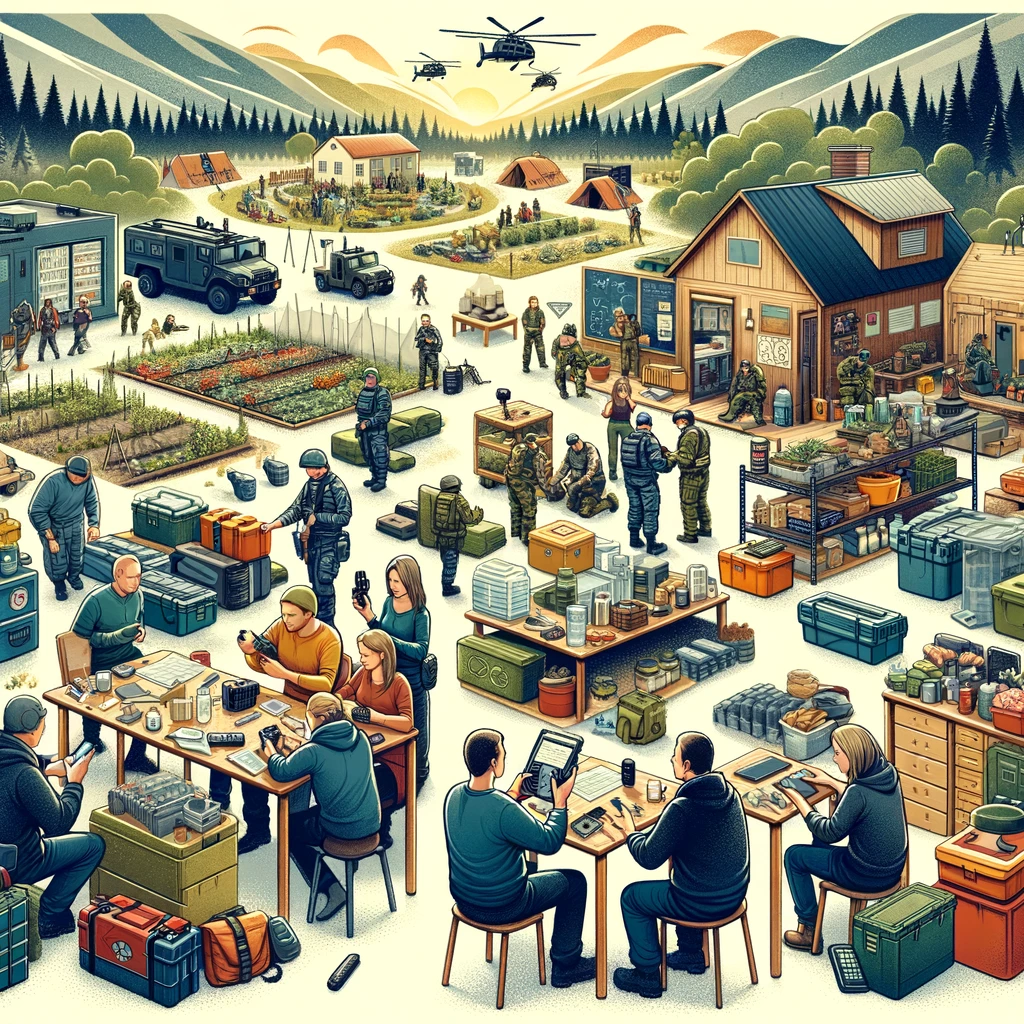In a world where uncertainty is the only constant, building a prepper community can provide a significant advantage. Establishing a network of like-minded individuals not only enhances your survival capabilities but also fosters mutual aid and support. This guide will walk you through the steps of creating a prepper community, ensuring that you and your neighbors are prepared for any eventuality.
Why Build a Prepper Community?
A prepper community offers numerous benefits:
- Shared Resources: Pooling resources like food, water, medical supplies, and tools.
- Skill Sharing: Learning and teaching essential survival skills.
- Mutual Support: Providing emotional and physical support during crises.
- Enhanced Security: Increased protection against threats through collective defense strategies.
Step 1: Find Like-Minded Individuals
Start by identifying people in your area who share an interest in prepping. Look for local groups or events where preppers gather.
Local Meetings and Events
- Community Centers: Check bulletin boards for prepper or survivalist meetings.
- Local Fairs and Expos: Attend local fairs or expos related to survival, hunting, or outdoor activities.
- Online Platforms: Use websites like Meetup to find local prepper groups.
Step 2: Establish Clear Goals and Objectives
Define the purpose of your prepper community. Establishing clear goals helps align everyone’s efforts and ensures that the group remains focused.
Common Objectives:
- Emergency Planning: Develop comprehensive plans for different types of emergencies.
- Resource Management: Create a system for pooling and distributing resources.
- Skill Development: Organize regular training sessions for essential survival skills.
Recommendation: Prepper’s Long-Term Survival Guide – This guide provides strategies and tips for long-term survival.
Step 3: Create a Communication Network
Effective communication is crucial for any prepper community. Establish reliable methods for keeping in touch, especially during emergencies.
Communication Tools:
- Two-Way Radios: Ensure every member has a two-way radio for instant communication. The Baofeng UV-5R is a popular and affordable option.
- Messaging Apps: Use secure messaging apps like Signal for regular updates and coordination.
- Regular Meetings: Schedule regular in-person or virtual meetings to discuss plans and updates.
Step 4: Develop a Resource Pool
Pooling resources enhances the community’s ability to respond to emergencies effectively. Create a system for collecting and managing shared resources.
Essential Resources:
- Food and Water: Stockpile non-perishable food and ensure access to clean water.
- Medical Supplies: Keep a well-stocked first aid kit and essential medications.
- Tools and Equipment: Share tools like generators, cooking equipment, and building supplies.
Recommendation: ReadyWise Emergency Food Supply – A reliable source of long-lasting emergency food supplies.
Step 5: Organize Training and Drills
Regular training and drills ensure that every member is prepared for emergencies. Focus on developing practical skills and practicing emergency scenarios.
Training Topics:
- First Aid and CPR: Conduct regular first aid and CPR training sessions.
- Fire Safety: Teach fire prevention and firefighting techniques.
- Self-Defense: Organize self-defense classes to enhance personal safety.
Recommendation: The Survival Medicine Handbook – A comprehensive guide to medical preparedness.
Step 6: Foster a Sense of Community
Building a strong sense of community is crucial for long-term success. Encourage social activities and mutual support to strengthen bonds among members.
Community Activities:
- Social Events: Host regular social gatherings, like potlucks or barbecues.
- Community Projects: Work together on community projects, such as building a community garden or repairing shared spaces.
- Support Networks: Establish support networks for childcare, elder care, and other needs.
Recommendation: Backyard Homesteading – Learn how to create sustainable living spaces in your community.
Conclusion
Creating a prepper community is a powerful way to enhance your preparedness and ensure mutual aid and support during crises. By finding like-minded individuals, establishing clear goals, creating communication networks, pooling resources, organizing training, and fostering a sense of community, you can build a resilient and supportive network.
